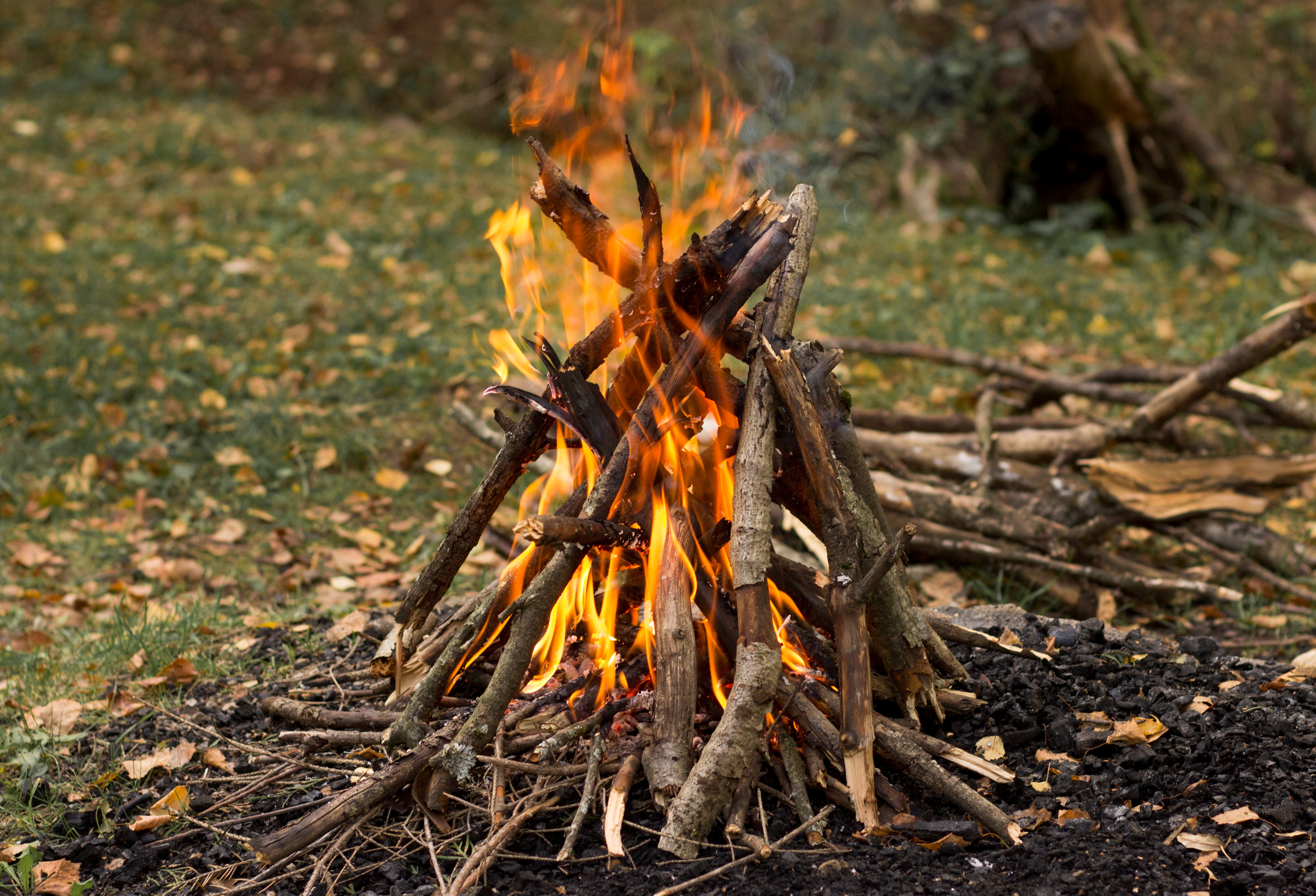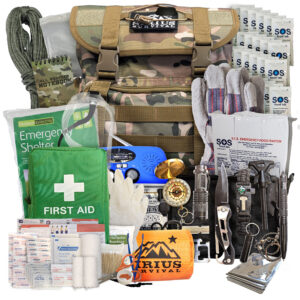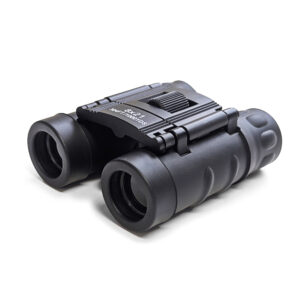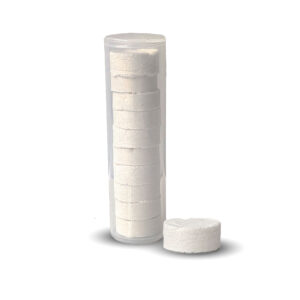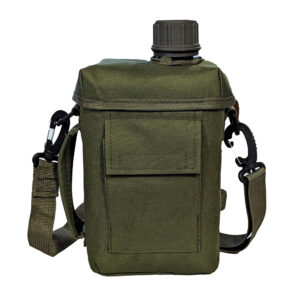Having the ability to build a fire, and make it last, could quite literally save your life. Fires are needed for not only warmth but to give off light and to help you prepare or cook your meals. If you are truly in a survival situation you’ll want to have a fire within the first several hours.
Although it may sounds like a simple task, building a fire that will actually last takes some skill. Many people struggle with the construction step of the fire. In addition, it is definitely not easy to start one if you do not have matches or a fire starter. We will not only discuss the numerous ways to construct an effective fire but how to light one without using matches.

Preparation
Before building and starting a fire you’ll need to prepare the area. Picking a safe location is part of the process. You’ll want to build your fire in an open space and on even ground. Be sure there is not an excess of dead leaves, dried shrubbery, or anything else that may start on fire on accident. You should also have flat ground because you won’t want to risk movement of the coals or logs once it is lit.
Although it is not necessary to dig a hole it can beneficial. Digging a small depression in the ground, between 3 and 8 inches deep in the center, can help prevent the fire from being impacted by wind. It also helps to secure the coals and the flame. Again, this step is not necessary but will make the fire more reliable and stable.
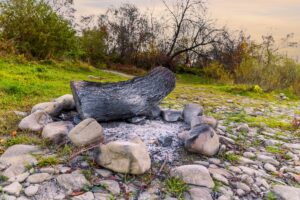
You can also set up a fire pit. Setting up a fire pit consists of creating a circle of rocks around the area. Depending on how high you stack the stones you are safely blocking the fire from any wind. It also helps to contain the fire if it begins to get out of control due to the fact that rocks are not flammable.
If you plan on constructing a traditional wood fire you will need to gather and collect three different types of wood.
- Tinder: You probably already know that tinder is the small materials that will easily set on fire. Examples of tinder are dried bark, dried moss or leaves and dried grass. any materials used in a fire will need to be dried and/or dead. Shred your tinder into small bits and put at the bottom of the hole you’ve dug.
- Kindling: Kindling is described as the small sized sticks and branches that will not require a lot of effort to be lit. Larger pieces of bark can be used as kindling as well as smaller sized branches and even dried leaves. Your kindling will be the second thing to catch once you have a flame.
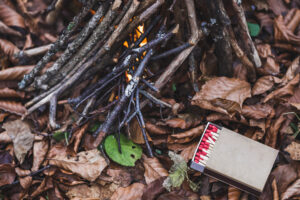
- Logs: At the very top of your fire you will have the logs. For obvious reasons, such as size, logs require a bit more effort to catch on fire. Once your tinder and kindling is burning the flame will be strong enough to spread to the logs. The logs will burn for a lot longer than the kindling and tinder. Be sure to have a stash of logs nearby, but not too close, for when the fire starts to die down. Again, any wood you use must be dried. Branches that are still green and growing will not burn, and if they do they will produce a large amount of smoke.
Construction
There are two main ways to construct a fire. The tepee method and the log cabin method. Both are effective. The tepee method is probably the most common but the log cabin method is easier if you are cooking over the fire.
Tepee
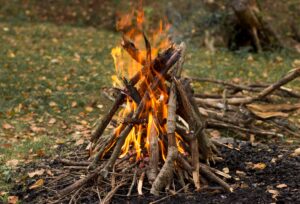
This method is commonly taught in scouts. It is the most common fire construction method out there. Begin by balling up your tinder into small amounts. Roll your materials between your palms to create circular shapes. Next you will stack the kindling around the balls of tinder in a cone shape. Be sure to put enough kindling so it is able to stand on its own. The last step is to stack the larger logs and branches around our kindling cone. Again, these branches will be in a cone shape and meet in the middle at the top.
If you plan on starting the fire with matches or a lighter you will need to leave a space so you are able to reach inside to reach the tinder. You may also need to lightly blow on the flame in order to help it catch. You may need to add more kindling and tinder if your fire does not catch at first. Once it is going you can add more logs to the cone as needed.
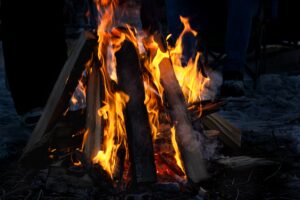
Log Cabin
This method is more effective if you plan on cooking over the flame. It will have a flatter top and not the shape of a cone like the tepee method. This will be helpful if you plan on setting a pot or pan on the flame for heating purposes.
For this method you will begin the same way you did for the tepee method. Construct a small tepee of your tinder and kindling. Once that step is done you will use a different approach. Use larger sticks and logs to stack around the small kindling cone. You will stack these logs in an alternating pattern. If you remember Lincoln Logs from your childhood you’ll be great at stacking these logs too.
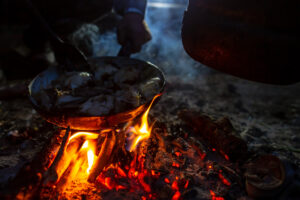
First, you’ll put 2 logs on opposite sides of the cone (like 2 opposite sides of a square). Then place two more logs perpendicular to the ones you just layed. All 4 logs will need to be touching, or pretty close to each other, so you may need to hunt around for several of similar length. Continue this process of an alternating pattern to your desired height. You will notice that there is space between the rows of logs. This is to allow airflow.
Once you have built your cabin around the tepee you will reach your hand in to light the kindling and tinder. You may need to lightly blow on it to help it out and light the larger sticks and logs.
Lighting
There are a few different methods for getting your fire lit. First and foremost, you can use a fire starter. This is probably the easiest way. Another pretty simple way is to use matches. Waterproof matches are the most effective for obvious reasons. If you happen to find yourself in a survival situation but do not have a fire starter or matches there are still a few ways to get your fire lit.

Flint & Steel
Using flint and steel is probably the most primitive way to start a fire. When flint is struck against steel there are tiny sparks. Sparks are essentially extremely intense and high heat but also very short lived. Luckily, this is exactly what you need to start a fire. Once the spark catches you may need to gently blow to help the fire pick up.
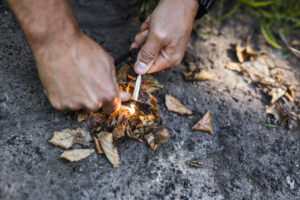
Hand Drill
Another primitive method, that’s been used for hundreds of years, is the hand drill. The only equipment you’ll need is some wood and some determination. This is not an easy method for many but can be effective.
Start by creating a “nest” of tinder. Similarly to the tinder you’d use to start a fire with a lighter you’ll want to find dried leaves and grass and/or shreds of bark. Find a piece of bark or wood (this will be your fire board) that is flat and carve a small notch in to the center. Place the bark underneath that notch. Your spindle (the stick you will be holding in your hand) should be at least 2 feet long in order to work properly. Start with your hands at the top of the spindle and vigorously rub them down the spindle. Doing this enough times and quickly enough will create a spark which will then be transferred to your tinder nest using the fire board.
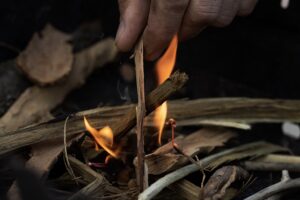
Bow Drill
This method also uses friction to help create a spark. You will need a fire board and spindle for this method as well. In addition you’ll need a socket. Your socket is going to be a hard material, preferably a rock or stone. You could also use another piece of wood as long as it is harder than the wood of your spindle. You will also need to create your bow. Choose a flexible curved piece of wood, about the length of your arm, for the outside of the bow. The cord of the bow can be anything. A shoelace, a piece of rawhide, dried out plant cord, etc. could be used. Attach the cord to the curved wood.
Once you attach your bow to the spindle, by looping it through the cord, you will apply pressure to the socket. Use the bow to create friction by using a sawing motion. The faster the better because more friction is more likely to create that spark. Once the spark is there you can use the fire board to transfer it to your kindling nest and get your fire going. You may need to do this several times before it catches.
Having a fire is a necessity during a survival situation. You get to choose which method of construction you use. Hopefully you find yourself with matches of a fire starter in order to quickly and easy get your flame started. If not, be sure to try out one of the other methods and let us know how it goes.
